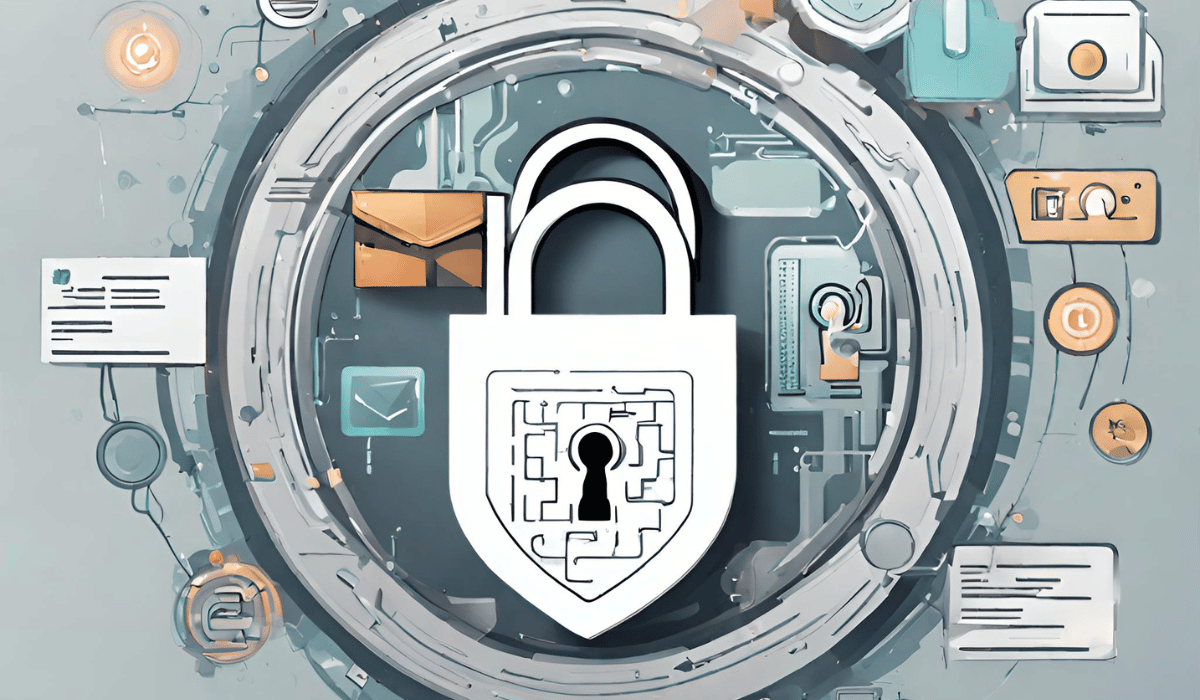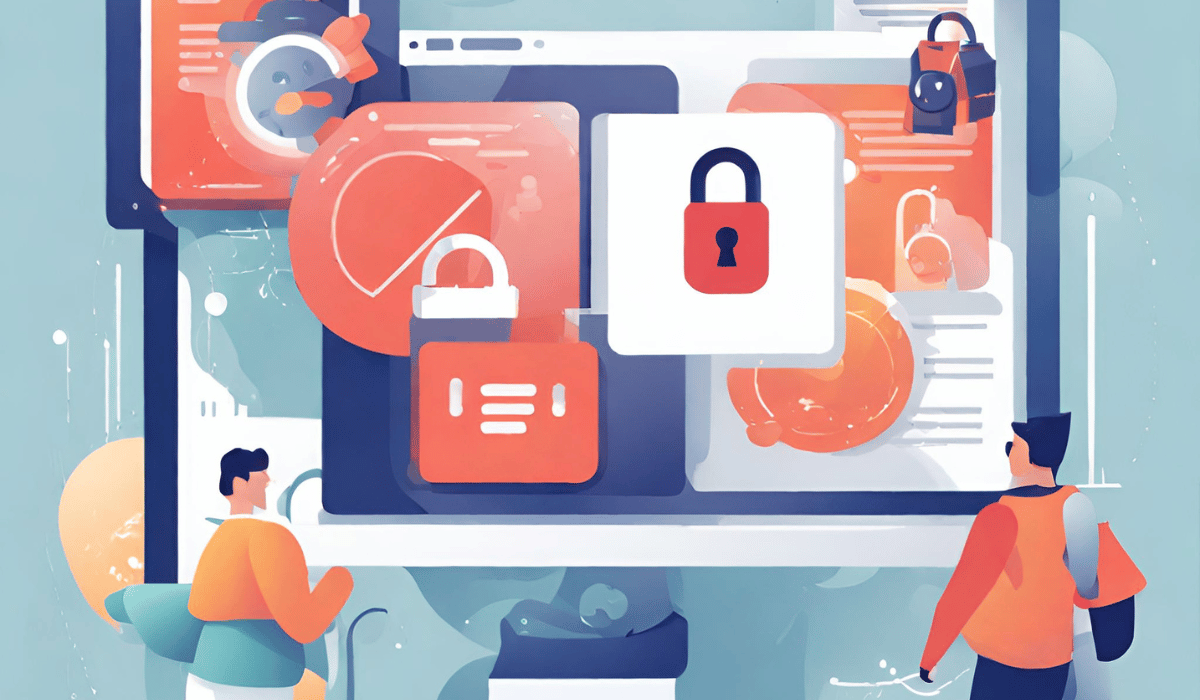Intro to Information Security And Data Protection
Information security and data protection refer to the measures taken to safeguard sensitive information from unauthorized access, use, disclosure, modification, or destruction. This includes protecting personal data, financial information, intellectual property, and other confidential information from cyber threats, such as hacking, malware, phishing, and social engineering attacks. Information security and data protection also involve compliance with legal and regulatory requirements, such as GDPR, HIPAA, and PCI DSS, and implementing best practices in risk management, access control, encryption and backup.
Importance of Safeguarding Digital World

Safeguarding your digital world is important for several reasons. First and foremost, it helps protect your personal and sensitive information from cyber threats, such as identity theft and financial fraud. This can have serious consequences, including financial loss and damage to your reputation. Furthermore, safeguarding your digital world is important for businesses and organizations, as it helps protect their customers’ information and maintain their trust.
Defining Information Security And Data Protection
Information security and data protection refer to the measures taken to ensure the confidentiality, integrity, and availability of information. This includes protecting information from unauthorized access, use, disclosure, disruption, modification, or destruction. Data protection involves safeguarding personal and sensitive information, such as financial and medical records, from unauthorized access or misuse. These measures can include using strong passwords, encryption, firewalls, and security software, as well as implementing policies and procedures for handling and storing sensitive information.
Common Types of Cyber Threats

There are several common types of cyber threats that individuals and organizations may face:
1. Malware: Malware refers to any software that is designed to harm or exploit computer systems, including viruses, worms, and Trojan horses.
2. Phishing: Phishing is a type of social engineering attack in which attackers use fraudulent emails, websites, or other forms of communication to trick individuals into providing sensitive information such as passwords or credit card numbers.
3. Ransomware: Ransomware is a type of malware that encrypts a victim’s files and demands payment in exchange for the decryption key.
4. DDoS attacks: Distributed Denial of Service (DDoS) attacks involve overwhelming a server or network with traffic, causing it to crash or become unavailable.
5. Insider threats: Insider threats occur when an individual within an organization intentionally or unintentionally causes harm to the organization’s systems or data.
Common Challenges And Vulnerabilities
Some common challenges and vulnerabilities that organizations face include:
1. Weak passwords: Weak passwords make it easy for attackers to gain unauthorized access to systems and data. Organizations should enforce strong password policies and encourage employees to use unique and complex passwords.
2. Outdated software and systems: Outdated software and systems can contain known vulnerabilities that attackers can exploit. Organizations should regularly update and patch their software and systems to address these vulnerabilities.
Role of Human Error in Cyber Risks

Human error can also play a significant role in cyber risks. This can include actions such as clicking on phishing emails or links, downloading malicious attachments, or using unsecured public Wi-Fi networks. To mitigate the risk of human error, organizations should provide regular training and education to employees on safe online practices and implement policies and procedures to reduce the likelihood of these errors occurring. Additionally, implementing technical controls such as firewalls and anti-virus software can also help protect against human error-related cyber risks.
Importance of Creating A Culture of Security
Creating a culture of security is crucial in mitigating cyber risks within an organization. This involves instilling a sense of responsibility for security among all employees, from top-level executives to entry-level staff. It starts with leadership setting the tone and emphasizing the importance of security in all aspects of the business. Regular security awareness training and education can also help create a culture of security. Employees should be made aware of the risks associated with cyber threats and taught how to identify and report suspicious activity.
Role of Training and Awareness in Security
Training and awareness play a crucial role in maintaining security in any organization. All employees need to understand the risks associated with cyber threats and how to prevent them. Regular security training can help employees identify potential security threats and take appropriate action to mitigate them. Effective security training should cover a range of topics, including password management, phishing scams, social engineering attacks, and malware prevention. This training should be tailored to the specific needs of the organization and the roles of individual employees.
Principles of Information Security and Data Protection
Principles of information security and data protection are essential for any organization that handles sensitive information. These principles include confidentiality, integrity, and availability. Confidentiality means that information should only be accessible to authorized individuals. Integrity means that information should be accurate and complete, and not subject to unauthorized modification. Availability means that information should be accessible to authorized individuals when needed. To ensure information security and data protection, organizations should implement security measures such as access controls, encryption, and backup systems.
Common Security Measures
There are several common security measures that organizations can implement to protect their information and data. These include:
1. Access controls: This involves limiting access to information and data to only authorized individuals. Access controls can be implemented through the use of passwords, biometric authentication, and other methods.
2. Encryption: This involves converting information and data into a coded format that can only be accessed with a specific key or password. Encryption can be used to protect sensitive information such as financial data, and personal information.
Compliance Requirements And Regulations
Compliance requirements and regulations refer to the rules and standards that organizations must adhere to to comply with legal, ethical, and industry-specific guidelines. These requirements can vary depending on the industry and the type of data being handled. For example, healthcare organizations must comply with HIPAA regulations to protect patient data, while financial institutions must comply with regulations such as the Gramm-Leach-Bliley Act to protect financial data. Failure to comply with these regulations can result in legal and financial consequences.
Cybersecurity For Businesses
Cybersecurity is a critical concern for businesses of all sizes. With the increasing reliance on technology and the internet, businesses are at risk of cyber attacks that can compromise sensitive data, disrupt operations, and damage reputation. Businesses need to implement strong cybersecurity measures to protect against these threats.
How To Secure Your Business Against Cyber Threats
Securing your business against cyber threats requires a multi-layered approach. Here are some steps you can take:
1. Educate your employees: Train your employees on cybersecurity best practices, such as creating strong passwords, avoiding phishing scams, and not sharing sensitive information online.
2. Use strong passwords: Implement password policies that require employees to use strong passwords and change them regularly. Consider using two-factor authentication for added security.
3. Keep software up to date: Ensure that all software and operating systems are up to date.
4. Consider cyber insurance: Cyber insurance can help protect your business from financial losses due to cyber attacks or data breaches. It can cover costs such as legal fees, data recovery, and customer notification expenses.
5. Backup your data: Regularly back up your important data to a secure location, such as an external hard drive or cloud storage. This can help you recover your data in case of a cyber-attack or data loss.
Why Do You Need Cyber Insurance?
You need cyber insurance to protect your business from financial losses due to cyber attacks or data breaches. Cyber insurance can cover costs such as legal fees, data recovery, and customer notification expenses. It can also assist with crisis management and public relations in the event of a cyber-attack or data breach. With the increasing frequency and severity of cyber-attacks, having cyber insurance can help mitigate the financial risks and potential damages to your business.
Frequently Asked Questions
What Is The Difference Between Information Security And Data Protection?
Information security and data protection are related but distinct concepts. Information security refers to the measures and practices that are put in place to protect digital information from unauthorized access, use, disclosure, disruption, modification, or destruction. This can include things like firewalls, encryption, access controls, and security policies and procedures. Data protection, on the other hand, specifically refers to the safeguarding of personal data.
How Do I Protect My Data Online?
There are several steps you can take to protect your data online:
1. Use strong and unique passwords for each of your accounts, and consider using a password manager to securely store them.
2. Enable two-factor authentication wherever possible to add an extra layer of security to your accounts.
3. Be cautious of phishing scams and never click on suspicious links or download attachments from unknown senders.
4. Keep your software and operating system up to date with the latest security patches and updates.
What Should I Do If I Suspect A Security Breach?
If you suspect a security breach, the first thing you should do is change your passwords for all of your accounts. You should also contact the customer support team for any affected accounts to report the breach and get guidance on what steps to take next. Additionally, you may want to consider running a virus scan on your computer and other devices to check for any malware that may have caused the breach. It’s important to act quickly and take all necessary steps to protect your personal and sensitive information.
Can Cyber Insurance Protect My Business From All Cyber Risks?
Cyber insurance can provide coverage for a variety of cyber risks, but it’s important to note that no insurance policy can protect your business from all cyber risks. Cyber insurance policies typically cover losses related to data breaches, cyber-attacks, and other cyber incidents. However, the specific coverage and limits of a policy may vary depending on the insurer and the policy terms. It’s important to carefully review and understand your policy to ensure that you have adequate coverage for your business’s specific needs.
Conclusion
In conclusion, cyber insurance can provide valuable protection for your business against a variety of cyber risks. However, it’s important to understand that no policy can protect you from all potential cyber threats. It’s crucial to review and understand your policy to ensure that you have the right coverage for your business’s unique needs.
